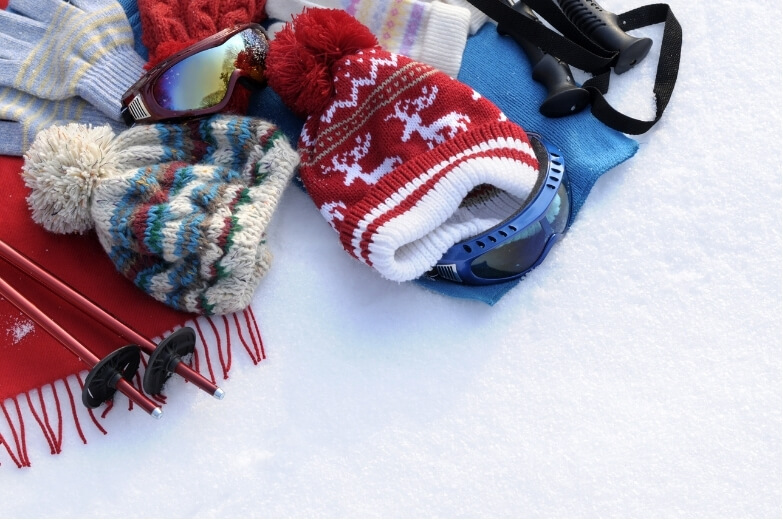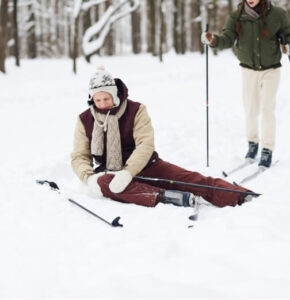Blog, Physiotherapy
Winter Sports Injuries: Using the PEACE & LOVE Approach

Winter season brings excitement but also a spike in winter sports injuries.
Colder temperatures, slippery fields, and tight muscles make athletes more prone to sprains, strains, and bruises.
Whether you’re into rugby, netball, soccer, or skiing, knowing how to respond to injuries quickly and correctly is key to recovery.
In this article, we cover the most common winter sports injuries and how to treat them using the PEACE & LOVE framework – a modern, evidence-based approach to soft tissue management.
Why Are Injuries More Common in Winter?
In winter, the body is less prepared for sudden exertion due to:
- Reduced muscle flexibility in cold conditions
- Inadequate warm-ups
- Wet or slippery playing surfaces
- Fatigue from end-of-season or high training loads
As a result, some of the most common winter sports injuries include:
- Ankle sprains
- Hamstring strains
- Knee ligament strains (e.g. ACL, MCL, LCL, PCL)
- Wrist and shoulder injuries from falls
- Calf tears in recreational athletes
First-Line Treatment: The PEACE & LOVE Framework
The PEACE & LOVE model, introduced by Dubois and Esculier (2020), improves upon outdated methods like RICE and POLICE.
It guides both the immediate and ongoing management of soft tissue injuries by encouraging active recovery and patient education.
PEACE – For Immediate Injury Management (First 1–3 Days)
| Step | Description |
| P – Protect | Reduce movement and load to prevent further tissue damage. Use bracing or crutches if needed, but avoid prolonged immobilisation. |
| E – Elevate | Elevate the injured area above heart level to help manage swelling. |
| A – Avoid Anti-inflammatories | Anti-inflammatories such as NSAIDs may delay healing by disrupting the body’s natural inflammatory process. Use only if pain is severe and under medical advice. |
| C – Compress | Apply compression using elastic bandages or garments to reduce swelling and support the area. |
| E – Educate | Empower the patient to take an active role in recovery. Avoid over-reliance on passive treatments like electrotherapy or unnecessary imaging unless red flags are present. |
For example, after an ankle sprain, it’s important to rest briefly, elevate the foot, apply compression, and begin gentle movement once tolerable.
LOVE – For Subacute and Ongoing Recovery (After 2–3 Days)
| Step | Description |
| L – Load | Resume movement and loading as soon as it can be done without significant pain. Gradual loading stimulates tissue healing and improves function. |
| O – Optimism | Psychological factors like fear or low confidence can delay recovery. Encourage a positive mindset and reassure the athlete that recovery is achievable. |
| V – Vascularisation | Engage in pain-free cardiovascular activity to increase blood flow, support healing, and improve overall conditioning. |
| E – Exercise | Progressive exercise programs restore mobility, strength, and proprioception. Functional rehab reduces the risk of reinjury. |
For instance, after a hamstring strain, a tailored exercise plan can start with gentle range-of-motion and strength work, followed by functional and sport-specific drills.
Key Takeaways
- Winter conditions increase the risk of soft tissue winter sports injuries.
- The PEACE & LOVE approach is a modern, evidence-based strategy for managing these injuries.
- Early education, progressive loading, and an active approach to recovery are essential.
- If symptoms don’t improve within a few days or you’re unsure about your next steps, consult a physiotherapist for a structured rehabilitation plan.
Frequently Asked Questions
Should I use ice for swelling?
Ice can help reduce pain in the short term, but there’s growing evidence that excessive cooling may delay healing. Use it sparingly, and only in the first 24–48 hours if needed for comfort.
Is it okay to take anti-inflammatories?
While anti-inflammatories may help with short-term pain, they can interfere with the body’s natural healing process. Avoid them in the early stages unless medically indicated.
Final Thoughts
Recovering from winter sports injuries doesn’t need to be complicated. Using the PEACE & LOVE framework ensures a more complete and efficient recovery.
By replacing outdated rest-heavy approaches with a more active, education-driven plan, athletes can return to sport safely and confidently.
Need help with a winter sports injury? Our physiotherapists can guide you through every stage of recovery, from initial assessment to full return to sport. Book your consultation today.
 |
Written By:
Marinus Du Preez (Principal Physiotherapist) Bachelor of Health Science (Physiotherapy) |
References
Dubois, B., & Esculier, J. F. (2020). Soft-tissue injuries simply need PEACE and LOVE. British Journal of Sports Medicine, 54(2), 72–73.
Bleakley, C. M., Glasgow, P., & MacAuley, D. C. (2012). PRICE needs updating, should we call the POLICE? British Journal of Sports Medicine, 46(4), 220–221.



